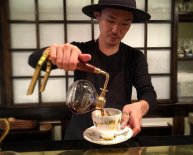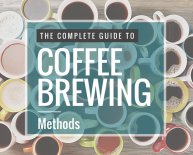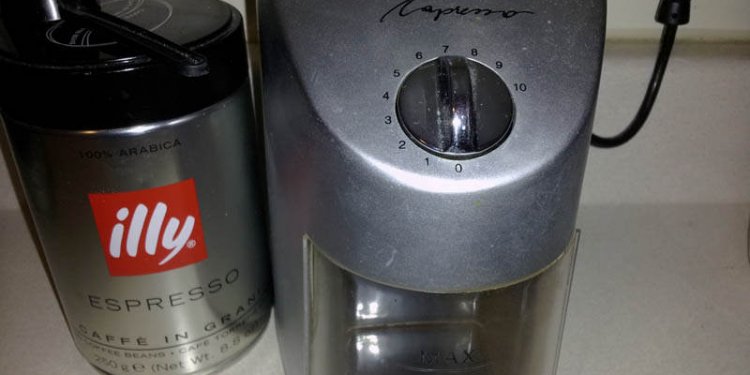
Coffee brewing methods
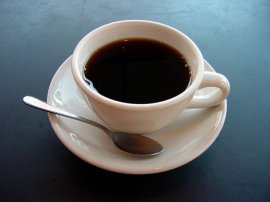 For all brewing practices, coffee must first be ground; then its soluble components must be dissolved in water, so they are introduced to the resulting brew. It's advocated to work coffee right before brewing, because the process releases taste plus leads to a higher perceptions of aromas; these aromas contains extremely volatile substances which could evaporate into the air with time [1]. The routine degree and particle dimensions also play important functions in the taste for the last walk. If grind is just too good, sour coffee can result from over-extraction of chlorogenic acids; if the routine is just too coarse, a weaker brew may result from the reduced area [2].
For all brewing practices, coffee must first be ground; then its soluble components must be dissolved in water, so they are introduced to the resulting brew. It's advocated to work coffee right before brewing, because the process releases taste plus leads to a higher perceptions of aromas; these aromas contains extremely volatile substances which could evaporate into the air with time [1]. The routine degree and particle dimensions also play important functions in the taste for the last walk. If grind is just too good, sour coffee can result from over-extraction of chlorogenic acids; if the routine is just too coarse, a weaker brew may result from the reduced area [2].
Coffee brewing is normally categorized under three types: decoction, infusion or steeping, and stress methods.
Decoction: Siphon
In decoction, floor coffee is in connection with high temperature water for a period, causing a far more intense removal [2]. Siphon, or cleaner brewed coffee, is a typical example of this technique. Because so many variables can be controlled, the coffee could be evenly extracted during a period of 45 moments to at least one min [3].
A siphon comprises of two glass chambers organized vertically. Near boiling water is added to the base chamber with a heat supply underneath. If the liquid is heated past its boiling point (212 °F or 100 °C), the warmth source transfers power towards liquid and creates vapor, or steam. Eventually, the pressure produced from the fuel exceeds that the atmospheric stress when you look at the siphon. To create more area for it self within the bottom chamber, the gasoline causes the rest of the fluid to the upper chamber.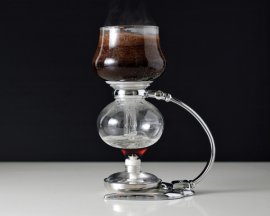 The coffee grounds tend to be added at this stage and stirred. The warmth resource maintains a consistent stress, maintaining the brew in the top chamber. After the brew is full, heat supply is taken away together with water vapor condenses into fluid kind. Since fluid uses up less amount than gas within the bottom chamber, a negative force void is established that is after that equalized because of the brew moving down [4].
The coffee grounds tend to be added at this stage and stirred. The warmth resource maintains a consistent stress, maintaining the brew in the top chamber. After the brew is full, heat supply is taken away together with water vapor condenses into fluid kind. Since fluid uses up less amount than gas within the bottom chamber, a negative force void is established that is after that equalized because of the brew moving down [4].
Infusion/Steeping: Chemex
An infusion involves steeping coffee in liquid before filtration, and produces a more gentle brew with more acidity [2]. An example may be the Chemex, that is a funnel shaped device with a pour over filter cone attached with a decanter. This is certainly just like a normal auto-drip coffeemaker in which the coffee is steeped and dripped through a paper filter. But the Chemex has some advantages, including control over liquid heat, infusion time, and pouring technique. The filter made use of is also thicker, so the reasons have the ability to steep in the water and trickle down more gradually.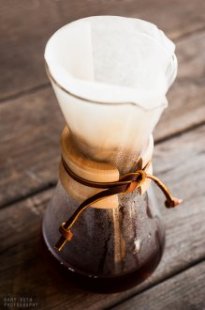 More taste compounds are introduced, resulting in a clean tasting brew with “bright” and “high” notes [5].
More taste compounds are introduced, resulting in a clean tasting brew with “bright” and “high” notes [5].
To prepare coffee with the Chemex, a method to medium-coarse grind is put in addition to a pre-rinsed filter. Hot-water is poured from a swan throat kettle (the slim spout maximizes pour control) in a circular motion. Since the first pour variations the coffee reasons, it degasses and skin tightening and (CO2) is introduced, resulting in bubbles and puffed up grounds. This might be called a “bloom, ” which procedure affects the taste and aromas associated with the brew, including increased acidity if bloom time proceeds for too long [6]. The reasoning behind it is that when CO2 reacts with liquid, it creates carbonic acid. Interestingly, lighter roasted espresso beans retain more CO2 than darker roasts [7].
CO2 (aq) + H2O (aq) « H2CO3 (aq)
Once the gasoline is released, the water starts to reduce the solubles inside coffee grind, that are responsible for most of the taste components. While the brew starts to trickle to the decanter, extra water is poured in identical circular movement to make sure that the causes are continuously replenished with fresh-water [6]. The grounds should be immersed to maintain a continuing temperature when it comes to brew and also to maintain the chemical responses going. This method additionally creates a powerful osmotic pressure to draw out the coffee concentrate through the grounds: since there are more coffee solutes into the routine and less when you look at the watery environment, the solutes will want to escape through semi-permeable cellular membranes associated with the espresso beans. However, since liquid is continuously poured over the surface of grounds, there clearly was a possibility of over removal through the top layer [7].
Stress: Moka pot
Unlike decoction and infusion, this method involves liquid having through grounds with high force and heat, like the style of espresso [2]. The Moka pot consist of a bottom chamber with water, a metal filter filled up with floor coffee, and a screw-on upper chamber.


